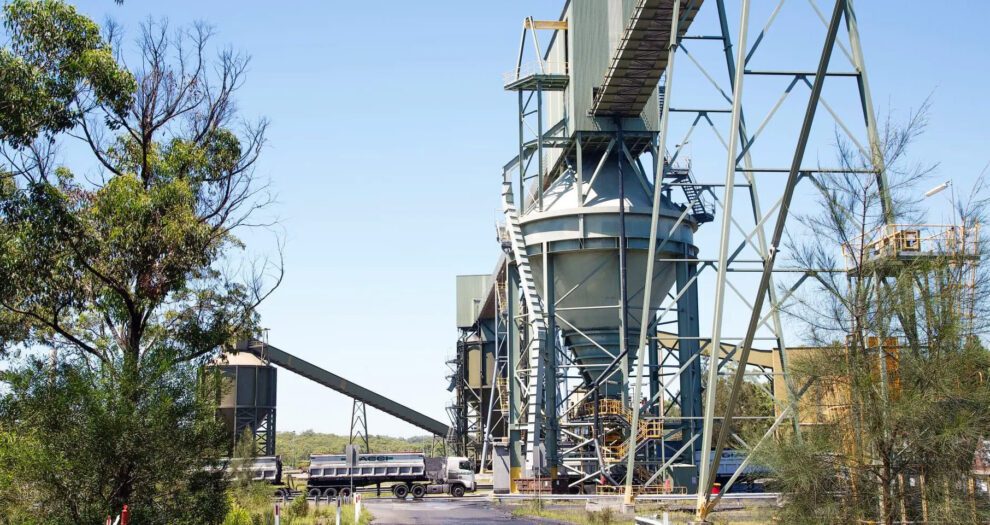A mine employee was crushed because he was neither paying attention nor practising workplace safety, investigators found.
An underground shift worker was hospitalised after being pinned between a rib and Joy 12CM12 continuous miner conveyor boom at Centennial Coal’s Myuna Colliery, 34km south of Newcastle.
The 45-year-old was helping a continuous miner operator and colleague install roof bolts when he stepped off a platform and positioned himself behind the continuous miner.
The machine operator repositioned the continuous miner to load a replacement bolt cassette into the heading’s centre, without realising his coworker was standing adjacent to the right rib. The conveyor boom struck the victim’s upper body and pinned him against the rib about 12:16am on 5 February 2021.
“The continuous miner operator heard the injured worker scream and moved the continuous miner, thereby releasing him,” the New South Wales Resources Regulator said in a new report on the incident.
“[The injured worker was] transported to the surface of the mine where he was treated by ambulance officers. There were complications with the injured worker’s first aid treatment and his extraction from the mine, [and] the injured worker was not initially given pain relief and an Oxy-Viva unit deployed to him contained an empty oxygen cylinder.”
Emergency responders treated the worker for a serious lower-left arm fracture requiring surgery, unilateral renal agenesis (kidney loss) and fractured ribs. His spine, shoulder, heart and mental health was also injured.
A subsequent investigation discovered the continuous miner was not fitted with a proximity detection system, victim failed to follow safe work location rules, and continuous miner operator inadequately inspected surroundings while tramming.
Other findings include a lack of effective communication between the continuous miner operator and victim. Both individuals were trained and “competent” in operating equipment, and already understood safe work procedures. Poor road conditions delayed the transport vehicle and doubled the usual length of time it takes to exit the mine too.
Investigators recommended that mine operators implement proximity detection systems and other “higher order” engineering controls with “lower order” administrative controls, including safe work location rules and training, to help manage risk. They recognised some mine operators have previously expressed concerns about reliability but dismissed them as outdated.
“The cost of proximity detection systems is generally not grossly disproportionate to eliminating or minimising the risk of interactions between continuous miners and workers,” they said in the report.
Other recommendations include:
- ensuring safe work location rules and exclusion zones are adequate, presented in a logical and consistent manner and understood by the workforce
- training workers in effective communication techniques when in noisy and dark environments
- reviewing emergency plans and training processes to ensure that they adequately reflect ambulance advice on the appropriate locations to treat injured workers
- reviewing inspection and audit programs to ensure all first aid equipment is adequate and fully functional
- reviewing current risk assessments about interactions between continuous miners and workers
- actively involving employees in discussions about the activity before commencing
- maintaining adequate separation distances from moving mobile plant
- mobile plant operators maintaining an effective lookout when moving equipment by scanning and monitoring the work environment.
- following safe work location rules and exclusion zones.
Click here to download the full report.
Related articles
Authority invites feedback on toxic work environments
Industry proposes FIFO workers must declare if they create poor environment
Prosecutor compelled to sue mining company for dead Qld worker
Probing industry response to employee deaths is welcome.














What about “NSW Resources Regulator not serious about safety. Mine worker crushed as a result of a failure to mandate engineering controls to address a well-known risk?” What about “Coal Company’s platitudes about their commitment to safety mean Zero. Another worker falls victim to a failure to invest in engineering controls that will save lives?” Shouldn’t we have systems and processes that allow workers to make a mistake without it resulting in a catastrophic incident? No, let’s continue to follow the well troden path of blame, shame and retrain.